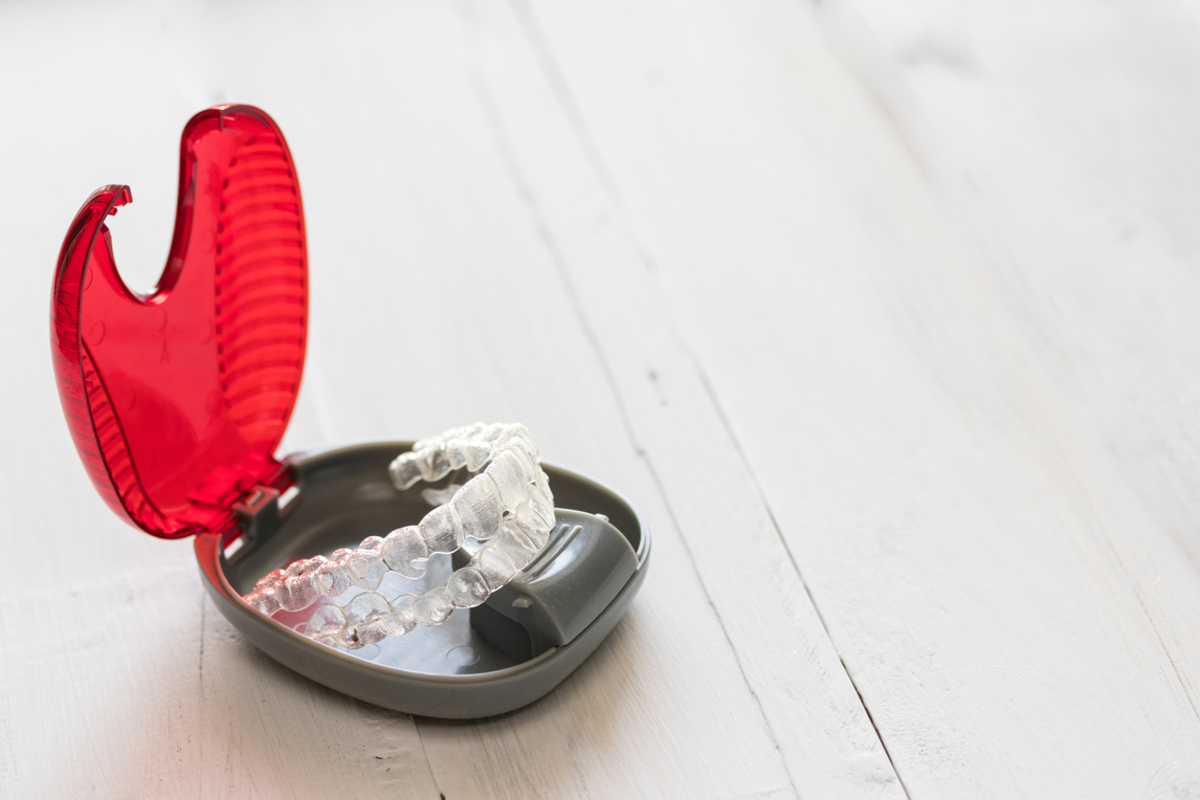Children today are more aware of their appearances than ever before. We are living in the age of social media, where a perfect selfie with a perfect Hollywood smile is what every teenager wants to strive for. In such an age, if a child sees that their newly-erupting teeth are out of place or crooked, it is nothing short of a nightmare for them.

Orthodontic treatment is traditionally done using fixed appliances know as braces, which involves sticking brackets onto your child’s teeth and placing a thin metal wire over them. Nowadays, however, other options are available to straighten the teeth without using fixed braces.
1. What is Invisalign?
With advances in all fields of dentistry and orthodontics in particular, it is now possible to correct certain types of misaligned teeth without the use of fixed braces. Your dentist can provide you with removable appliances known as "clear aligners". These aligners have to be changed sequentially every few weeks, following your dentist’s advice.
Invisalign is the biggest and most well-known company to provide these clear aligners. It is by no means the only company, though, and many other options are available.
Invisalign aligners are custom-made for your child’s teeth, which helps them shift from their incorrect position and gradually guides them into their correct position in the jaw.
2. How does Invisalign work?
Once an orthodontist determines that your child’s case is treatable with Invisalign, they will take measurements of your child’s teeth, and send them to Invisalign to get your own customized set of "clear aligners".
Your orthodontist will provide you with two to three sets of aligners at each visit. Your child will wear these most of the day, changing the aligners every few weeks as advised by your orthodontist.
3. Advantages of Invisalign
Comfortable
Since no fixed braces are attached to your child’s teeth, Invisalign is a very comfortable alternative to traditional methods of correcting malaligned teeth. This results in a much more pleasant experience over the duration of the treatment. Problems associated with traditional braces like lip irritation or ulcers on the lips and cheeks are virtually non-existent with Invisalign.
Discreet
Since Invisalign is totally transparent and fits snugly onto your child’s teeth, these retainers are almost impossible to spot from a distance when worn. This makes Invisalign an excellent option for children who are slightly older or even in college, because they have no stigma attached to them.
Easy to maintain
As Invisalign is a removable appliance, it is very easy to maintain oral hygiene during the course of the treatment. Your child can take the aligner off when he or she is brushing, and can maintain good hygiene. This goes a long way towards preventing problems like decay and swollen gums associated with traditional braces.
Convenience
The number of visits to your orthodontist can be dramatically cut, as there is no need to tighten or change wires, and no cases of braces falling off the teeth.
Aligners can be taken off while brushing, eating or drinking, so there is virtually no discomfort in your child’s day-to-day activities. They can also be taken off during a special occasion if needed. Patients should, however, remember that Invisalign or any other clear aligner only works when worn for the majority of the time, otherwise the movement is extremely slow.
4. Disadvantages of Invisalign
Misplacing or losing an aligner is a common issue associated with clear aligners. Children tend to be careless with things. Not only will losing an aligner lengthen the treatment time, it can also cost you financially.
Parents need to be extra vigilant and make sure that their child wears the aligners for the recommended time and also are careful not to misplace them.
Aligners can become warped if they are kept under direct heat or extreme cold for a long period of time.
5. Can all cases be treated with Invisalign?
There was a time when only mild cases involving minor corrections — like rotated teeth or mild spacing between teeth — were treatable with Invisalign. However, the introduction of Invisalign attachments means that more complex cases are being treated using Invisalign, like crowded teeth or bite corrections. Invisalign attachments are small buttons of tooth-colored material applied to certain teeth during the course of your treatment, which help achieve more challenging movements.
The final call on whether Invisalign is the best treatment option for your child’s condition is the orthodontist’s.
6. Is Invisalign treatment costly?
The convenience of a removable appliance does come at a premium compared to traditional braces. The total cost of treatment depends on the degree of correction needed in your child’s teeth and the number of aligners required to correct them. Also, misplaced or lost aligners can cause the cost to go up a bit. Hence it is imperative that you and your child are extra careful when handling the retainers.
Conclusion
Invisalign treatment is also ideal for adults and professionals who have a lot of social exposure and are wary of being stuck with traditional braces for a prolonged period of time. Although they cost more than fixed braces, it is an option that should definitely be discussed with your orthodontist.


Your thoughts on this